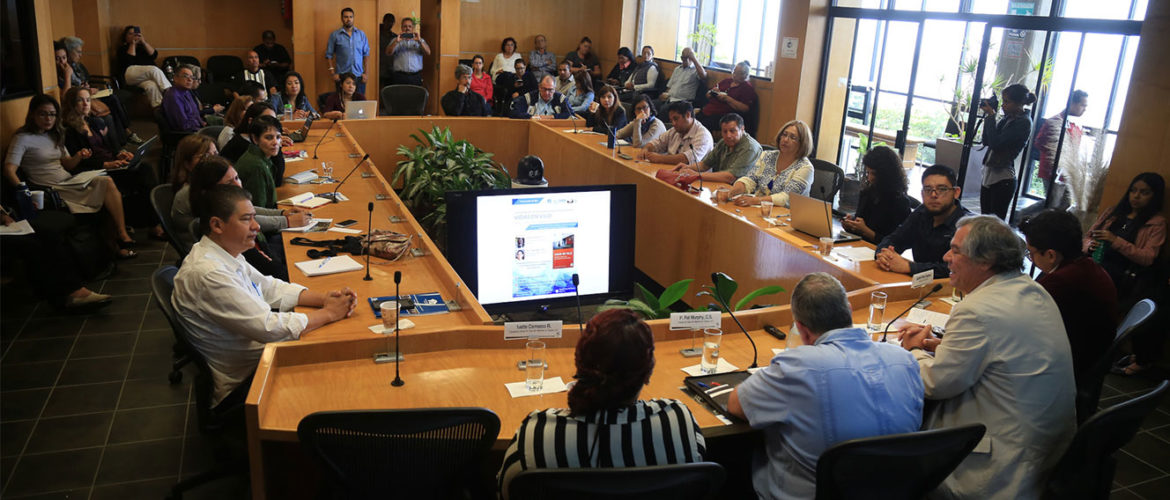El pasado 24 de agosto de 2017, se presentó en El Colegio de la Frontera Norte (El Colef) el Modelo Scalabrini de Inserción Social para Deportados, en aras de que la población conozca la forma en la que la casa desarrolla su labor.
El responsable de abrir la ponencia fue el Dr. Rafael Alarcón Acosta, Profesor-investigador del Departamento de Estudios Sociales, quien abordó el tema “Características sociodemográficas y planes para el futuro de los migrantes mexicanos deportados en Tijuana”. Su exposición giró en torno a una serie de comparaciones entre encuestas realizadas por el sistema de Encuestas sobre Migración en las Fronteras Norte y Sur de México (EMIF) y la Casa del Migrante.
Entre los datos a destacar se dijo:
- El 61% de los que se hospedan en la Casa del Migrante de Tijuana tienen hijos del otro lado de la frontera.
- El 68.7% de los deportados encuestados por la EMIF tiene intenciones de volver a su lugar de origen, pero solo el 43.4% de los encuestados por parte de la Casa del Migrante planean volver a su tierra natal.
- El 11.5% de los deportados tienen intenciones de residir en la ciudad de Tijuana de manera permanente, según datos de la EMIF. Al contrario de la encuesta realizada a los migrantes cuando llegan a la CDM, donde el 30.2% de los deportados tienen intenciones de volver a Tijuana su lugar de residencia.
La presentación del Modelo Scalabrini estuvo a cargo del Padre Pat Murphy, Director de Casa del Migrante, quien resaltó que cerca del 90% de las personas que han atendido son deportados. También recalcó que debe brindarse ayuda a los migrantes por parte del gobierno ya que en el año 2016, el valor de las remesas fue de 27 mil millones de dólares, un aporte cuantioso a la economía del país como para ignorar a este grupo de personas.
Indicó que el modelo tiene tres fases, la primera consiste en superar el trauma inicial de la deportación, después la reconstrucción de plan de vida y redes sociales, y por último, separarse de la casa y ser autosuficientes. Lo que este modelo de trabajo busca, detalló, es que el migrante que llegue al albergue tenga la oportunidad de reinsertarse en la comunidad de la que ahora forma parte como una persona socialmente responsable. Para ello, la Casa del Migrante cuenta con apoyos económicos, bolsa de trabajo, programa de comida, entre otras ayudas.
Posteriormente, el Padre Murphy agregó que para el año 2018 tienen planeada la inauguración del Centro Scalabrini de Formación para Migrantes (CESFOM) donde se impartirán cursos, programas de educación y de formación laboral, así como ayuda en trámites legales a quién así lo requiera.
Por su parte, la Lic. Ivette Carrazco, del Departamento de Trabajo Social de la Casa del Migrante, presentó casos de diversas personas que han ingresado a la casa, algunas han logrado una inserción exitosa en la comunidad, mientras que otros han buscado regresar a Estados Unidos y otros han caído en la drogadicción.
La presentación del Modelo Scalabrini se transmitió vía Internet y se encuentra disponible en el canal de YouTube > https://www.youtube.com/watch?v=A6xopbVWNxw&t=112


